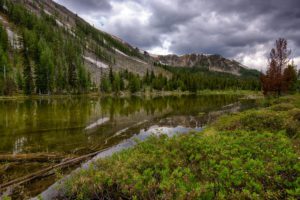For Immediate Release: March 23, 2023
Contact:
Adam Bronstein, Western Watersheds Project, (541) 595-8034, adam@westernwatersheds.org
Patrick Donnelly, Center for Biological Diversity, (702) 483-0449, pdonnelly@biologicaldiversity.org
RENO, Nev.— Western Watersheds Project and the Center for Biological Diversity sued the U.S. Bureau of Land Management today to challenge a massive vegetation removal project near Great Basin National Park that violates several environmental laws.
The project, approved last September, would remove pinyon-juniper forests across more than 380,000 acres of federal land in eastern Nevada.
“The Bureau’s plan would brutalize broad swaths of the sagebrush landscape using bulldozers, chains, mowers, choppers, fire, chainsaws and chemical herbicides,” said Adam Bronstein, director for Nevada and Oregon for Western Watersheds Project. “This isn’t a ‘treatment,’ it’s more like torture, and the animals that live on this land will have their homes permanently destroyed.”
Today’s lawsuit, filed in U.S. District Court in Reno, says the Bureau of Land Management project harms sagebrush habitats for imperiled greater sage grouse, pygmy rabbits and pinyon jays, animals whose populations are plummeting. These habitats are already being lost because of livestock grazing, invasive species and unnatural fire cycles. Pinyon-juniper forests have been decimated since the mid-1800s by wood collection for building and mining operations.
“Spring Valley is the heart of the eastern Great Basin and a critically important landscape for wildlife and biodiversity. We’re not going to sit by while the Bureau of Land Management drives bulldozers through it,” said Patrick Donnelly, Great Basin director at the Center for Biological Diversity. “The BLM has been playing games with inadequate analysis of these projects for years, and now we’re holding this agency accountable for breaking the law.”
The lawsuit says the Bureau erroneously concluded that the project would have no significant environmental impacts, ignoring the harm to Rocky Mountain elks, pronghorn, mule deer, bighorn sheep, sage-grouse and sensitive fish and reptiles in the area.
Native Americans have used pinyon pine and juniper trees for food, medicine and ceremonial purposes since time immemorial. Pinyon pine nuts are a traditional food source for area tribes and a focal point of traditional ways of life. Tribes and their members today maintain ties to historical pine-nut gathering locations and hold ceremonies to coincide with the annual pine nut harvest.
Spring Valley is an important cultural landscape for the Western Shoshone, both as a traditional location for gathering and ceremony, and as a site of repeated massacres by colonizers. Two Western Shoshone tribal elders, Delaine and Rick Spilsbury, have joined today’s litigation.
“If it looks like deforestation and defoliation, it will eventually be called that,” said Rick Spilsbury. “And only then will this act be seen for what it is: ecocide for agriculture, a scorched earth attack on White Pine County to ultimately take its water, and the destruction of the natural world that supported my people for tens of thousands of years for a short-term gain.”
The lawsuit says the Bureau failed to analyze the harm from the project and failed to comply with land use plans for the valleys. The organizations are asking the court to overturn the decision.
—-
Western Watersheds Project is a nonprofit environmental conservation group dedicated to protecting and restoring native wildlife and watersheds throughout the American West.
The Center for Biological Diversity is a national, nonprofit conservation organization with more than 1.7 million members and online activists dedicated to the protection of endangered species and wild places.
Photo by Jim Morefield, courtesy of Flickr






